Corsica’s land holds the memory of past civilisations. Across the island, you will find monuments in Corsica that show how people lived, built, and defended their homes through many centuries. These places include prehistoric stones, Roman towns, medieval towers, and mountain citadels. Some are well-known and marked on every map, while others stand alone, without signs, in fields or on hilltops. The island has changed hands many times, with Greeks, Romans, Pisans, Genoese, and French rulers each leaving buildings behind. But Corsicans also built in their own way, using local stone and designs suited to their lives.
Top Monuments In Corsica
Here is a list of monuments in Corsica which let you know learning through quiet places, worn steps, and old walls.
1. Filitosa
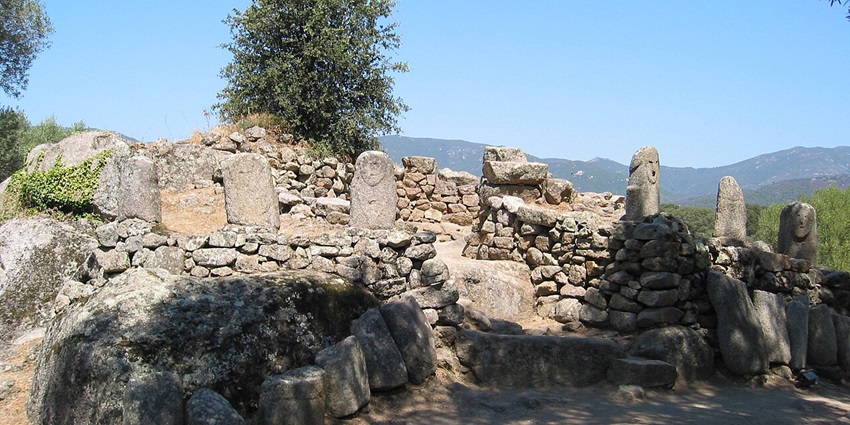
Photo: xtra online / Wikimedia Commons
Filitosa is among the most remarkable monuments in Corsica, located near the quiet village of Sollacaro in the island’s south. This archaeological site holds remains that stretch back almost 8,000 years, with sculpted granite menhirs believed to be around 6,000 years old. It was uncovered in 1946 by local landowner Charles-Antoine Cesari. Full excavations followed in the 1950s under the direction of archaeologist Roger Grosjean. These efforts revealed the traces of the Torrean civilisation, known for its stone towers and carved warrior statues. Scattered nearby are the stone foundations of circular huts and areas where ceremonies or gatherings have taken place.
Location: Sollacaro, southern Corsica
Entry Fee: €9
Timings: 9 AM – 7 PM (April to October)
2. Maison Bonaparte
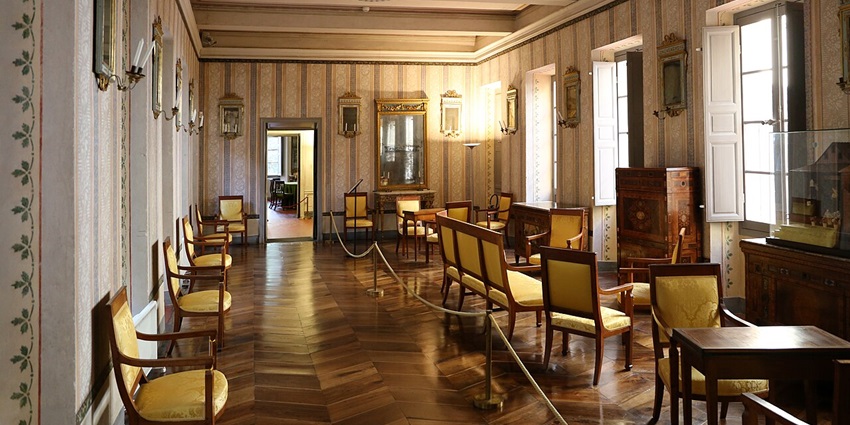
Photo: Sailko / Wikimedia Commons
In Ajaccio’s old quarter stands Maison Bonaparte, one of the most important monuments in Corsica. This house is where Napoleon Bonaparte was born in 1769. From the outside, it looks like a typical Corsican townhouse, but inside, each room carries traces of a family tied closely to the island’s past. There are portraits, wooden chests, religious icons, and furnishings from the 18th century that belonged to the Bonapartes. The house was damaged during local unrest in the late 18th century, but it was later restored by Cardinal Fesch, Napoleon’s uncle.
Location: Rue Saint-Charles, Ajaccio
Entry Fee: €7.50
Timings: 10:30 AM – 12:30 PM, 1:15 PM – 4:30 PM (Closed on Mondays)
3. The Citadel Of Calvi
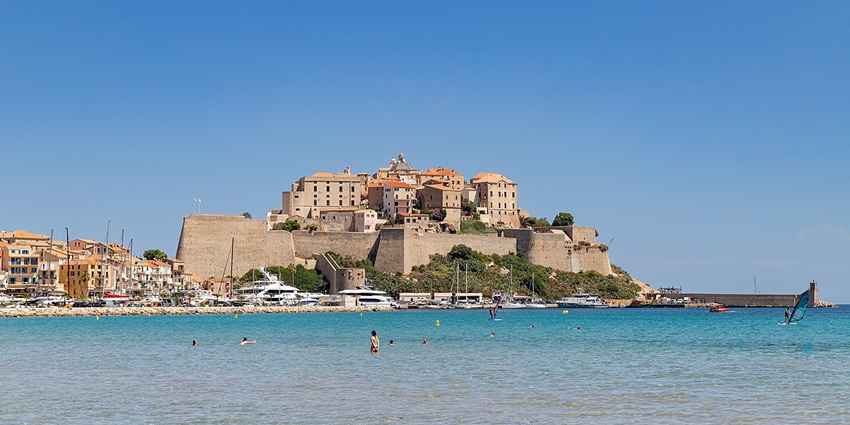
Photo: dronepicr / Wikimedia Commons / Image For Representation Only
The Citadel of Calvi stands high over a town, with stone walls overlooking the sea and surrounding hills. It was when the island was ruled by the Republic of Genoa, and its elevated position was no accident. From here, guards could watch for ships approaching from the open waters or threats coming from inland. The citadel has not been heavily altered. Inside, there are still narrow stone lanes, arched passages, and buildings that once served as military housing and administration. A plaque on the wall claims Christopher Columbus was born here, though the origin is disputed.
Location: Calvi, northwest Corsica
Timings: 8 AM – 8 PM
4. Corte Citadel
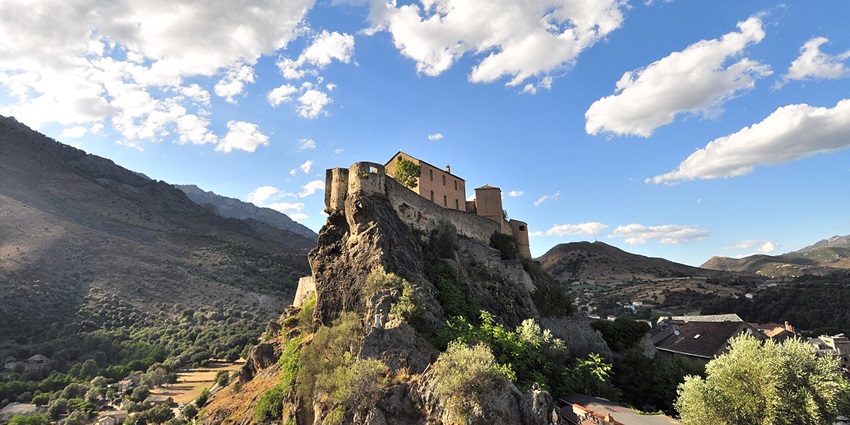
Photo: Sebastien / Wikimedia Commons
Perched on a rocky outcrop above the town, Corte Citadel commands the valley with steep walls and narrow paths. This 15th-century fortress was first built by Vincentello d’Istria under the rule of the Crown of Aragon. Centuries later, it became a stronghold for Pasquale Paoli, who led Corsica’s independent republic during the 18th century. Corte was the capital at that time, and the citadel served both defensive and political purposes. Inside, the old structures now hold the Musée de la Corse, where displays focus on the island’s rural life, struggles for autonomy, and deep-rooted customs.
Location: Place du Duc de Padoue, Corte
Entry Fee: €5.50
Timings: 10 AM – 6 PM (Closed on Mondays in winter)
5. The Cathedral Of Saint Mary Of The Assumption
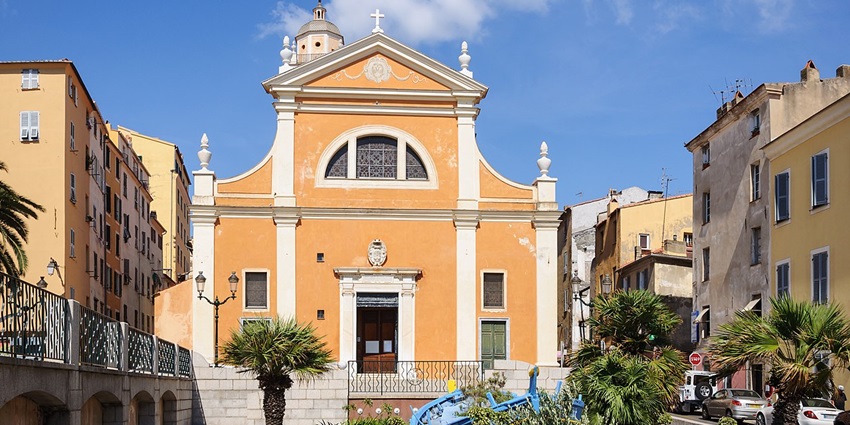
Photo: Myrabella / Wikimedia Commons
In the old part of Ajaccio stands the Cathedral of Saint Mary of the Assumption, built between 1577 and 1593 on the ruins of an earlier church. This cathedral is directly linked to Corsican history through Napoleon Bonaparte, who was baptised here in 1771. Inside, a small marble plaque near the baptismal font marks the occasion. The building follows late Renaissance designs, with a simple ochre exterior and a peaceful interior. There is one main nave flanked by side chapels. The walls are lined with religious paintings, and one of the main works, a Madonna del Sacramento, was donated by Napoleon.
Location: Rue Forcioli Conti, Ajaccio
Timings: 9 AM – 12 PM and 2 PM – 6 PM
6. Aleria Archaeological Site
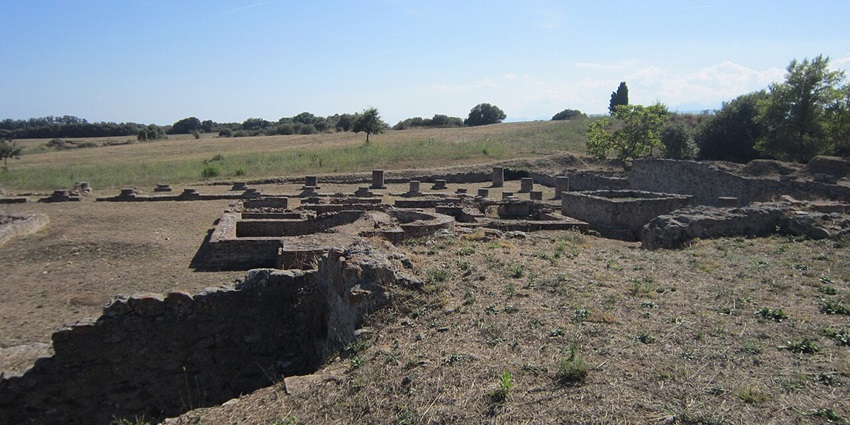
Photo: TeletubAstyanax / Wikimedia Commons
The Aleria Archaeological Site preserves the remains of ancient settlements dating back over 2,500 years. Aleria began as a Greek colony, later taken over by the Etruscans, and finally expanded under the Romans, who turned it into a strategic port and administrative centre. The site includes the ruins of a Roman forum, houses, and a temple. Pottery fragments, mosaics, and tools unearthed during excavations show the influence of different civilisations across centuries. It holds weapons, statues, and ceramics found during digs. Walking here connects you with centuries of movement, trade, and control across the Mediterranean.
Location: Aleria, eastern Corsica
Entry Fee: €5
Timings: 9 AM – 6:30 PM (Closed on Mondays)
7. Église Saint-Jean-Baptiste
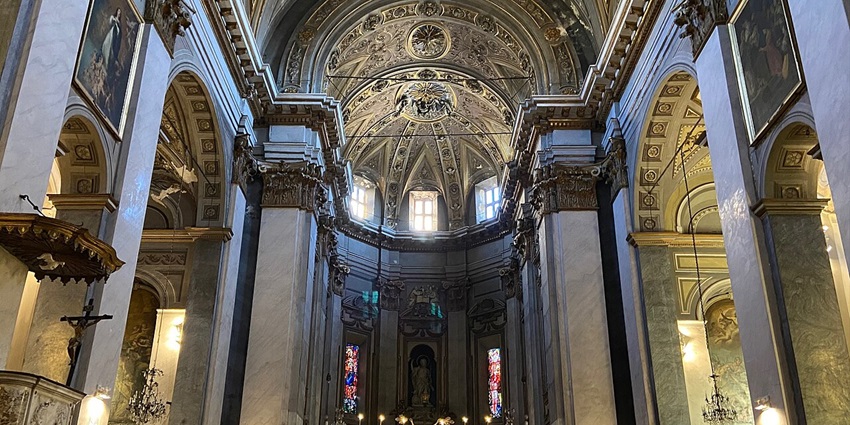
Photo: Cosudibastia / Wikimedia Commons
In the centre of Bastia’s old port, the Église Saint-Jean-Baptiste stands with its two bell towers rising above the town. Work on the church started in the 17th century, and it later became the largest church in Corsica. The building follows the Baroque style, with a wide front, high windows, and detailed decoration inside. The altar and chapels were made by local builders, with carved wood and painted details added over many years. The church is still used for daily services. The bells are heard across the harbour and nearby streets.
Location: Rue Chanoine Letteron, Bastia
Timings: 9 AM – 6 PM
8. San Michele de Murato
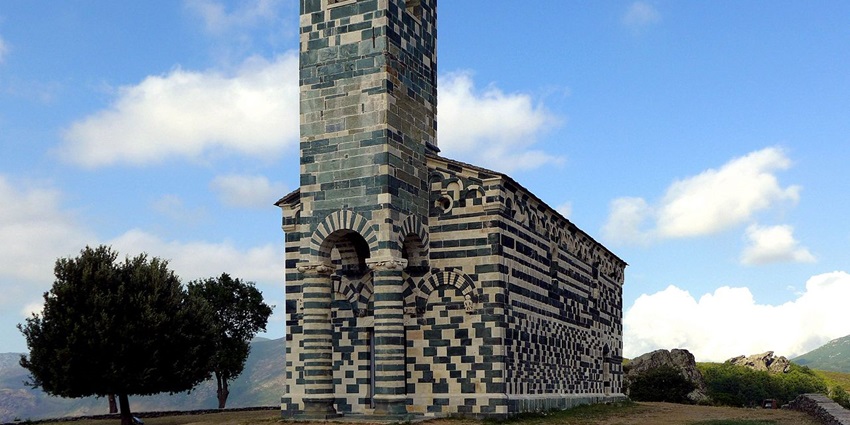
Photo: Dnalor 01 / Wikimedia Commons
San Michele is a small Romanesque church built on a slope in Murato, in northern Corsica. It was completed in 1280, during the time when Corsica was under the control of the Republic of Pisa. The church was built by Pisan workers using stone taken from the surrounding region. Its outer walls are covered in green serpentine and white limestone, arranged in clear, alternating patterns. The colour contrast is strong, and the design gives the church a bold and unusual look for Corsica. San Michele was built on a hilltop with a single nave and a carefully carved bell tower.
Location: Murato, Haute-Corse
Timings: 9 AM – 6 PM
9. Bastia Citadel (Terra Nova)

Photo: dronepicr / Wikimedia Commons
The Bastia Citadel, also called Terra Nova, stands above the old port in northern Corsica. It was built during the 15th century when the Genoese ruled the island and made Bastia their capital. The strong stone walls were raised to protect the harbour and keep the town secure from attacks. Inside the citadel, there are quiet lanes, old houses, the Governor’s Palace, and the Cathedral of Sainte-Marie, which still holds carved altars and paintings from the past. The top of the walls gives a wide view of the sea and the old lower town.
Location: Bastia, Haute-Corse
Timings: 9 AM – 7 PM
10. Tour de la Parata
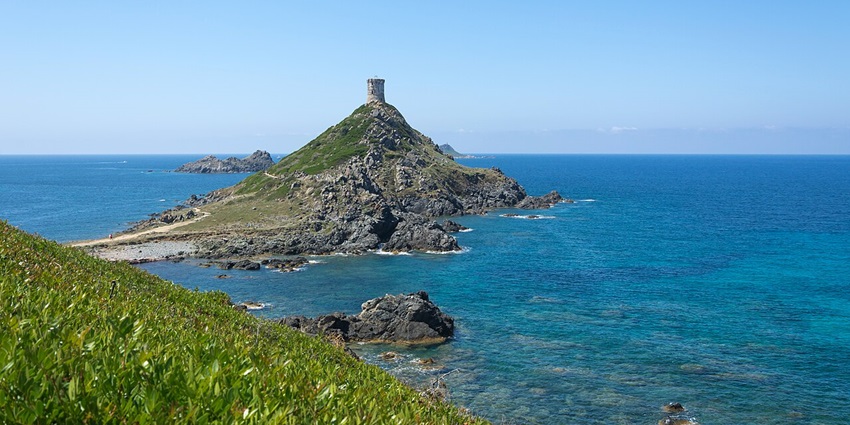
Photo: Isiwal / Wikimedia Commons
Tour de la Parata is built on a rocky point west of Ajaccio, looking out across the sea toward the Îles Sanguinaires. The tower was built around 1550 by the Genoese during a time when Corsica’s coast was under threat from pirates. It was part of a long chain of watchtowers placed along the shoreline. Its thick stone walls and raised entry helped protect the men who once stood guard here. A footpath leads up to the tower through low shrubs and rough ground. From the edge, you can see the water, the islands, and the curve of the coast.
Location: Route des Sanguinaires, Ajaccio
Timings: 24*7
monuments in Corsica are part of the island’s story. They were built by the people who lived here, ruled here, and shaped the land across thousands of years. Some were made to protect towns, while others were built for worship or to mark power. Today, many of them still stand across hilltops, by the sea, and inside old villages. Plan a trip with TripXL and walk through these sites.
Cover Photo: dronepicr / Wikimedia Commons


 WhatsApp
WhatsApp
 Twitter
Twitter









